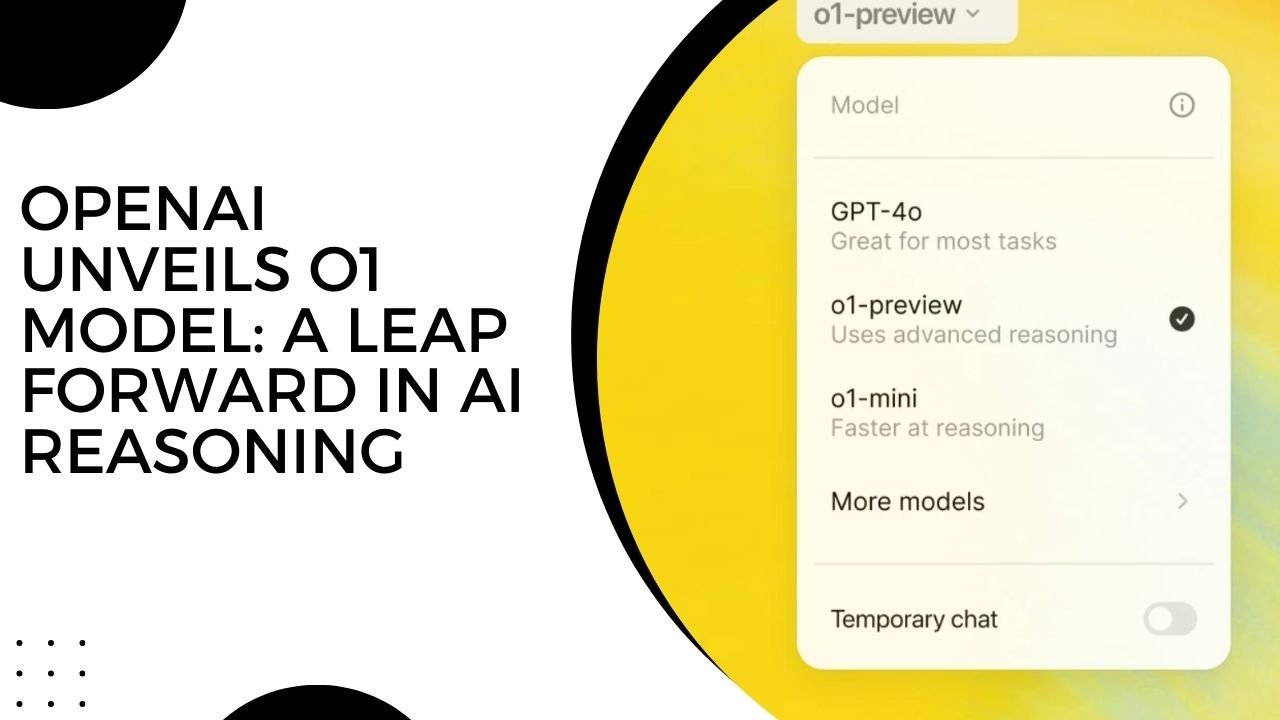OpenAI has pulled back the curtain on its latest marvel: the o1 model. Previously shrouded in secrecy under the codename “Strawberry,” this cutting-edge AI system represents a significant leap forward in machine reasoning capabilities, particularly in the realms of science, coding, and mathematics.
The o1 model’s claim to fame lies in its unique approach to problem-solving. Unlike its predecessors, which often produced rapid-fire responses, o1 takes a more measured approach. By dedicating more time to “thinking” before answering, the model mimics human-like reasoning processes, resulting in more nuanced and accurate solutions to complex problems.
Impressive Benchmarks Across the Board
The true measure of any AI model lies in its performance, and o1 doesn’t disappoint. In a series of rigorous evaluations, the model has demonstrated prowess that borders on the extraordinary. Consider its showing in competitive programming: o1 managed to rank in the 89th percentile on Codeforces, a platform known for its brutally challenging coding contests. This performance puts it shoulder-to-shoulder with some of the world’s most talented human programmers.
But o1’s talents aren’t limited to coding alone. In the realm of mathematics, the model proved its mettle by placing among the top 500 students in the USA Math Olympiad qualifier (AIME). This achievement is particularly noteworthy given the intense competition and the abstract nature of high-level mathematics problems.
Perhaps most impressive is o1’s performance in scientific domains. When faced with a benchmark of physics, biology, and chemistry problems (GPQA), the model didn’t just hold its own – it exceeded human PhD-level accuracy. This feat suggests that o1 could become an invaluable tool for researchers and scientists, potentially accelerating the pace of scientific discovery.
The model’s advanced reasoning abilities extend beyond academic pursuits. O1 has shown remarkable aptitude in tackling multifaceted real-world issues, generating sophisticated algorithms, and excelling at comparative analysis tasks. This versatility makes it a potential game-changer in fields ranging from legal document examination to complex contract analysis.
Two Flavors of Innovation: o1-preview and o1-mini
OpenAI has introduced two variants of the o1 model, each tailored to different use cases. The flagship o1-preview represents the pinnacle of the model’s capabilities, offering the full spectrum of its advanced reasoning powers. However, recognizing that not all tasks require such computational firepower, OpenAI has also unveiled o1-mini.
This smaller sibling to o1-preview is designed with efficiency in mind. Optimized specifically for coding tasks, o1-mini offers a compelling balance of performance and cost-effectiveness. In fact, it’s 80% cheaper to run than its more powerful counterpart while still maintaining competitive performance on coding benchmarks. This makes o1-mini an attractive option for developers who need robust reasoning capabilities without the overhead of extensive world knowledge.
Both models are now available through ChatGPT and OpenAI’s API, giving users the flexibility to choose the version that best suits their needs and budget.
Challenges and Limitations
Despite its impressive capabilities, the o1 model is not without its challenges. The advanced reasoning comes at a cost – quite literally. API users will find that input costs for o1 are three times higher than GPT-4, with output costs climbing to four times as much. This premium pricing may limit accessibility for some users and applications.
Performance speed is another area where o1 shows room for improvement. The model’s deliberate approach to problem-solving can result in processing times exceeding ten seconds for complex queries. While this thoroughness contributes to its accuracy, it may prove frustrating in scenarios requiring rapid responses.
It’s also worth noting that o1 currently lacks some features available in other AI models, such as web browsing and file analysis capabilities. Additionally, early reports suggest an increased tendency towards hallucinations – confident but incorrect statements – compared to its predecessors. These limitations highlight the ongoing challenges in developing truly robust and reliable AI systems.
Looking to the Future
OpenAI has laid out a roadmap for o1’s rollout and continued development. Currently, ChatGPT Plus and Team users can access the model, with enterprise and educational users slated to gain access in the coming week. Developers meeting certain API usage requirements can begin prototyping with both o1 variants immediately.
In an exciting development for the broader AI community, OpenAI plans to extend o1-mini access to all free ChatGPT users in the future, though no specific timeline has been announced. This move could democratize access to advanced AI reasoning capabilities, potentially spurring innovation across various fields.
As for the future of o1 itself, OpenAI has committed to addressing its current limitations and expanding its feature set. Plans are in place to integrate capabilities like web browsing and file uploads, which would significantly enhance the model’s utility across a wide range of applications.
The unveiling of the o1 model marks a significant milestone in the evolution of artificial intelligence. While challenges remain, the model’s advanced reasoning capabilities open up new possibilities for problem-solving in fields ranging from scientific research to software development. As OpenAI continues to refine and expand o1’s abilities, we may be witnessing the dawn of a new era in machine intelligence – one where AI doesn’t just process information, but truly thinks.

